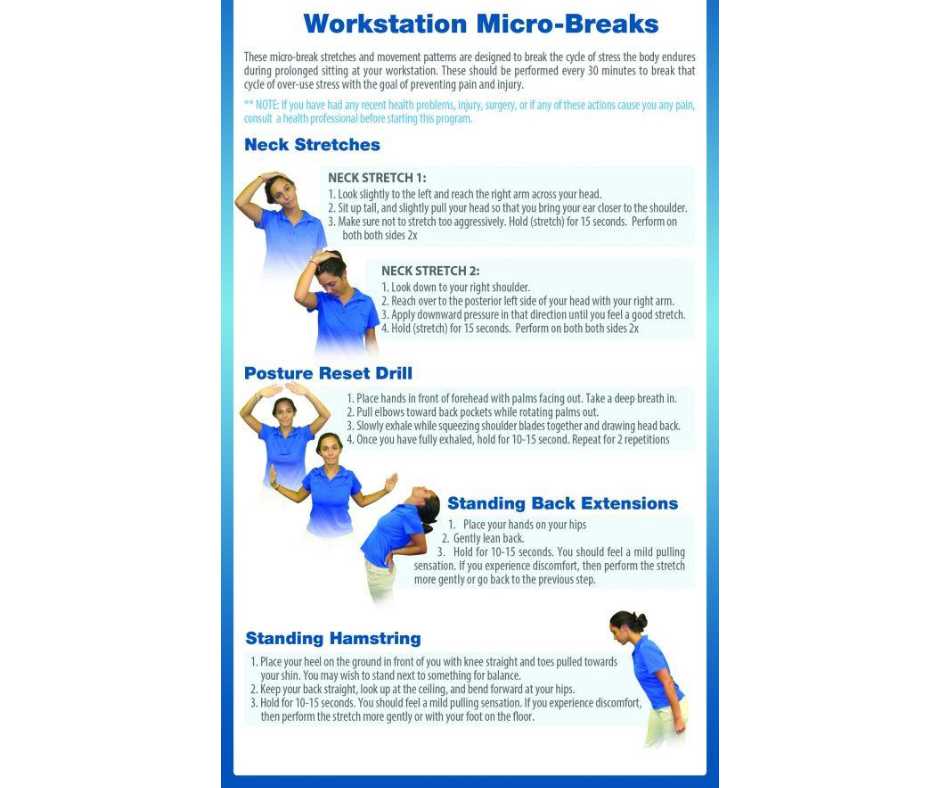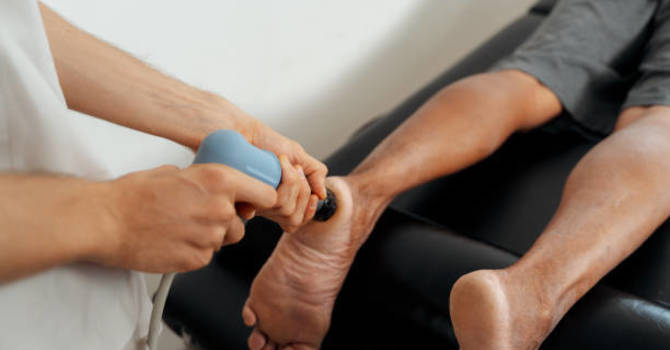
After reviewing 3 fitness experts responses to determine their most valuable tips for the desk jockey to stay healthy we have a blog here to share the top suggestions. We are all well aware that prolonged sitting can be detrimental to your health, but what can you do to stay healthy if you have a desk job?
Here are their suggestions along with a 6-part strategy to prevent the adverse effects of prolonged desk sitting
Part 1: Interview Summaries
Part 2: Real Life Desk Life Strategy!
Part 1: Education Training and Understanding Pain/Injuries
We truly believe the first step of preventing pain and injury or achieving optimal health, is first to understand how pain, injury and poor health occurs in the body. Education training is a key aspect, and we are going to focus here on musculoskeletal health.
Resources
- The Modern Desk Jockey Podcast
- The Office Ergonomics Initiative
Interview 1: Julie Weidenfeld of Peak Health 360
www.peakhealth360.com
Fitness, Finance, and Food (3 Areas of Wellness)
Julie’s Key Takeaways
- Move in every aspect of your life, at home and work
- Set the alarm, every hour to perform some movement. 3-5 minutes in length.
- Lacrosse Ball under your legs, top of legs, between shoulder blades while at the desk.
- Light dumbbells at your desk for fitness snacking throughout the day.
- Park at the farthest spot away to get more walking throughout the day.
- Walking meetings are a great way to get movement and productivity.
- Seated Exercise throughout the day three times per work day minimum.
- Seated Cat and Cows
- Seated Twists
- Neck Ranges of Motion
- Shoulder Rolls
- Find an accountability buddy.
- Strategically plan your traveling to take your workouts with you.
Interview 2: Tyler Forbes at Forbes Fitness
Tyler’s Key Takeaways
- Posture
- Small side mirror to remind you of your posture at your desk.
- Sticky notes or calendar reminders to check your posture.
- Shoulder blade and back exercises in the gym to help with posture.
- Lack of Movement
- Mini-water breaks throughout the day.
- 10,000 steps per day.
- The Trifecta Desk Exercises
- Desk Push-Up
- Body Squats
- 10 Shoulder Blade Contractions
- Stress Management
- Mindfulness at your desk by closing eyes, sitting in good posture and slow deep breathing a few times per day. All technology off for the moment.
- Improves mood, productivity and stress management
- Abdominal breathing instead of chest breathing.
Interview 3: Stacey Joiner of The Royal Treatment
Stacey’s Key Takeaways
- Biggest Concerns
- Lack of Movement
- Stress
- Chair Yoga
- Done by anyone, anytime, anywhere with no restrictions
- Yoga is done on the mat adapted to the chair
- Inhalation and exhalation will destress the body and mind
- 2 Chair Yoga Poses
- Cat and Cow in the chair
- Arm Stretches and Circles and shaking it out
- Deep breathing can be performed while driving to and from work too.
- Type in “Chair Yoga” on YouTube for good options
- Hydration is key throughout your day. Infused water with mint leaves, cucumber or fruit. Let it infuse overnight and then bring it to work and have at your desk.
Part 2: Proper Ergonomics
The word ‘ergonomics’ comes from the Greek words ‘ergon’ which means work, and ‘nomos’ which means natural laws. Ergonomics can thus be defined simply as the natural laws of work. More specifically, ergonomics is the scientific study of designing the job and workplace to fit the worker, keeping in mind their capabilities and limitations. Ergonomics combines the knowledge of other scientific disciplines like anatomy and physiology, biomechanics, engineering, psychology, and statistics to ensure that workplace designs complement the strengths of people and minimize the effects of their limitations.
Ergonomics is also known as human factors, and the terms are often used interchangeably. Ergonomists and human factors specialists seek to understand how a workplace, product, tool, or system can be best designed to fit the people who need to use it. The goal is to apply this knowledge to improve the system, human performance, and productivity, while also focusing on the health, safety, and well-being of the individuals involved.
Resources
- See Episode 3 (https://www.healthfitcorpwell.com/003-desk-ergonomics/)
- www.healthfitcorpwell.com/self-assess
Part 3: Micro-Breaks
It is important to build micro breaks into the daily routine. As such, Stanford also provides the following ideas for making breaks a part of the workday: Move the printer to an area that requires you to stand up and walk to get a printout. Stand up when talking on the phone (the use of a stand-up desk is also helpful), Go to the restroom or get a cup of coffee/water (frequently; remember the glass of water every hour), Break up continuous computer time with tasks such as checking phone messages, reading reports, etc.
Our favorite intervention is the Micro-Break Card (see below). Make sure to implement these micro-breaks every 60 minutes.
- See Episode 5 (https://www.healthfitcorpwell.com/episode-005-the-micro-breaks/)
- See Episode 43 (https://www.healthfitcorpwell.com/0episode-43-spinal-hygiene-to-prevent-spinal-decay-with-dr-tabor-smith/)
Part 4: Body Positioning and Awareness
The key to injury prevention for the spine is to avoid improper positioning and movements that will cause undue stress. The Sternum Up, Power Zone and Abdominal Bracing will keep the spine in neutral, allow for proper bending at the hips and protect the spine. Here are easy ways you can implement this into your activities of daily living.
Sternum Up- Keeping the sternum up automatically sets the body into good posture and maintains:
- Neutral Spine: Maintaining good spinal alignment decreases the stress placed on the spine and discs.
- Hip Hinging: Bending at the hips, and not the low back, decreases the stress placed on the low back and increases strength & power.
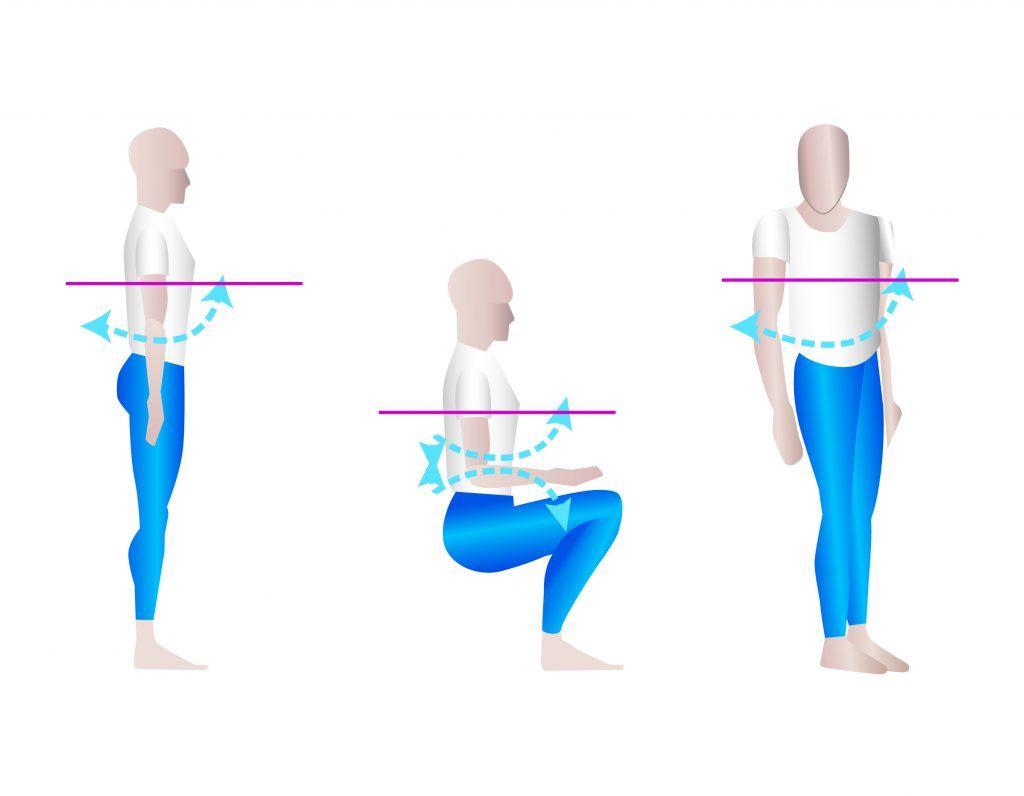
Power Zone- The zone that will optimize lifting strength and injury reduction.
- Bend your elbows at a 90-degree angle, and you are in the “Primary Power Zone."
- The area up to the shoulders and down to the hips is acceptable.
- The more you can work in the “power zone” the less fatigue on your body
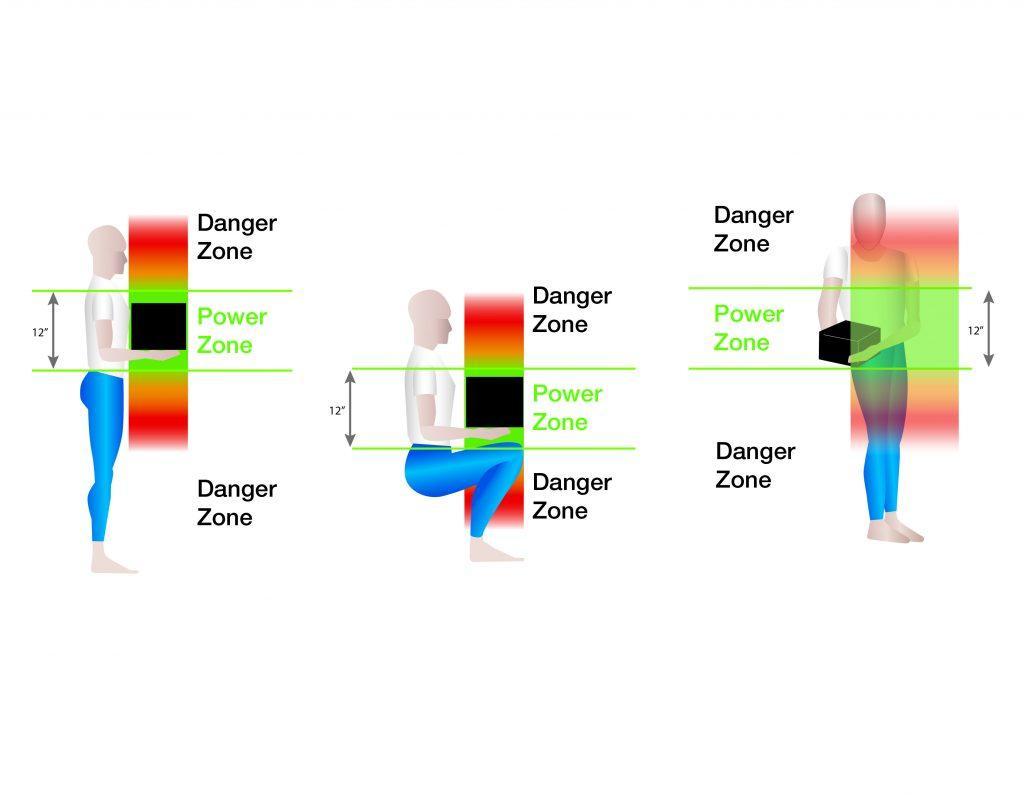
Abdominal Bracing- When all of your core muscles work together, a “Super Sti¬ffness” occurs, and all 3 layers of the abdominal wall are activated to protect and stabilize the spine and discs.
Without bending forward, contract the abdominal muscles (like you are about the get punched in your gut – feel them tighten with one hand) and the buttock muscles (as if you are holding in a bowel movement). You will feel the lower back muscles contract (with the other hand) when you contract your abs and buttocks. Activities of Daily Living 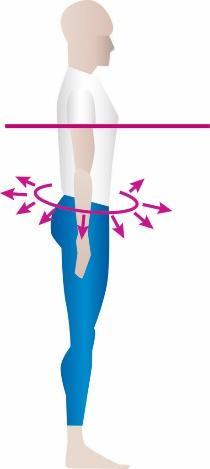 Resources
Resources
- Episode 35: (https://www.healthfitcorpwell.com/episode-035-the-three-body-preparation-drills-that-will-spare-your-back-neck-and-shoulders/)
Part 5: Proper Posture
Vladimir Janda, a highly notarized Medical Physician, was the first physician to define posture into the different “crossed syndromes” outlined in chapter 2. In 1979 he classified postural distortion into the three different syndromes; upper crossed lower crossed and layered syndromes. Based upon these syndromes, postural corrections were theorized to correct these musculoskeletal imbalances.
Resources
- Episode 16 (https://www.healthfitcorpwell.com/episode-16-posture-correction-program-phase-1/)
- Episode 18 (https://www.healthfitcorpwell.com/episode-18-posture-program-phase-2-lower-crossed-syndrome/)
Part 6: Corrective Exercises
Corrective exercises are typically spine-sparing strategies that include movements and stretches to correct postural distortions and musculoskeletal imbalances. This would include concepts like taking micro-breaks very often at work to stretch for 20 seconds, look 20 yards away at an object to readjust the muscles in your eyes from staring at a computer screen. Other strategies for corrective exercise might include, an overhead arm reaches, Brugger’s postural relief, sitting to standing, spine mobilization exercises, and wall angels. These exercises can help open up the posture from sitting in a forward flexed position for hours at a time.
Functional rehabilitation would include incorporating functional exercises that are intended to activate the core. This activation will help strengthen the body’s muscles to make the muscles stronger to endure hours of repetitive posture. Some of these exercises might include; side bridges, rows, planks, cat/camel exercises, bird dog and superman extension exercises just to name a few. Below is a small sampling of corrective exercises and functional rehabilitation that you can incorporate into your daily routine. Later in this book, we will be providing you with a self-functional assessment that will find some of your potential functional deficiencies with correlated corrective strategies.
Resources
- Episode 30 (https://www.healthfitcorpwell.com/episode-30-efficient-and-effective-exercise-options-at-your-workplace/)
Lastly, here is a short clip about sit to stand desks!


